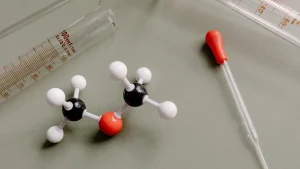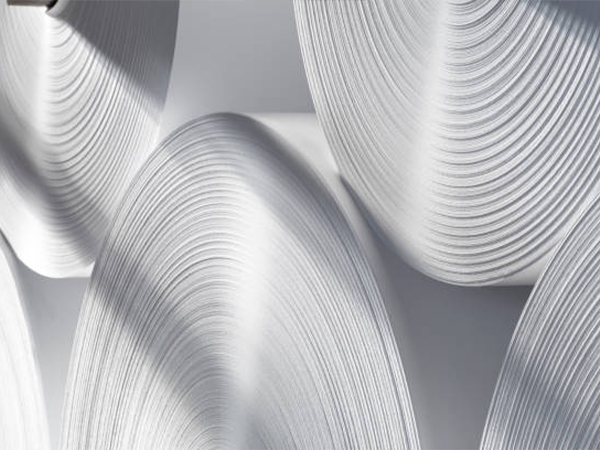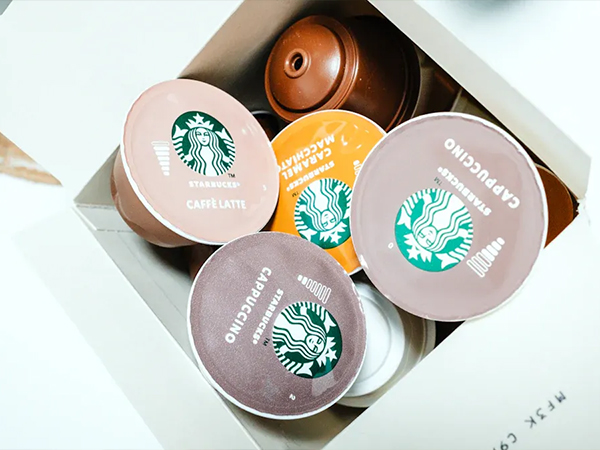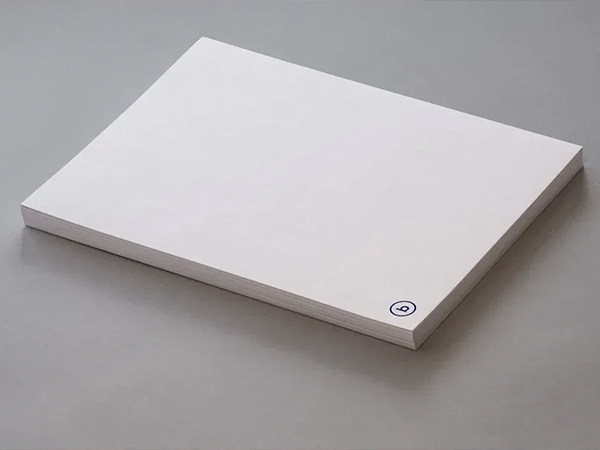
You rely on alkyl ketene dimer to achieve water resistance in modern alkaline papermaking. This chemical enables you to use calcium carbonate fillers, which enhance paper quality and sustainability.
- European mills led the move to alkaline processes decades ago, followed by major American and Japanese producers.
- The industry adopted alkaline sizing to meet ecological goals, improve performance, and respond to market demand for sustainable paper.
- Technological advances, including automated controls and surface treatments, now support high-quality, eco-friendly production.
Key Takeaways
- Alkyl ketene dimer creates strong water resistance by bonding chemically with cellulose fibers in alkaline conditions, improving paper durability.
- Using AKD allows the use of calcium carbonate fillers, which enhance paper brightness, strength, and sustainability.
- Controlling pH, temperature, and retention aids like cationic starch ensures better AKD bonding and reduces chemical loss during papermaking.
- Proper distribution and curing of AKD on fibers lead to uniform sizing and long-lasting water repellency in paper products.
- Avoid overdosing AKD above 2% to prevent brittleness and maintain the mechanical strength of the paper.
Alkyl Ketene Dimer Mechanism

Chemical Reaction with Cellulose
You enable water resistance in paper by using alkyl ketene dimer, a molecule built around a four-membered oxetan-2-one ring with long alkyl chains. This unique structure allows it to interact directly with cellulose fibers. The internal sizing process involves three main steps:
- You retain alkyl ketene dimer particles on the cellulose fibers during sheet formation.
- The particles melt and spread across the fiber surfaces when exposed to heat.
- Alkyl ketene dimer reacts with the hydroxyl groups on cellulose, forming covalent β-keto-ester bonds.
This chemical reaction occurs most efficiently in neutral to mildly alkaline conditions, typically at pH 7.5–9.0 and temperatures between 90–110 °C. Not all of the alkyl ketene dimer reacts; some may hydrolyze and not bond to cellulose. However, the portion that forms covalent bonds creates a durable, hydrophobic layer on the fiber surface. This layer resists water penetration and remains stable even after repeated exposure to moisture.
Tip: To maximize the effectiveness of alkyl ketene dimer, you should control process parameters such as pH and temperature. This approach ensures more of the chemical bonds with cellulose and less is lost to hydrolysis.
Hydrophobicity and Water Resistance
When you treat cellulose fibers with alkyl ketene dimer, you dramatically increase their resistance to water. The covalent bonds formed during the sizing process create a closed, hydrophobic surface. Scientific studies show that this treatment can push water contact angles above 100°, confirming strong water repellency. In practical terms, paper and even plywood treated with alkyl ketene dimer absorb much less water over time. For example, plywood treated with this chemical shows reduced water uptake at 2, 24, and 48 hours, and improved resistance to decay from fungi.
You can also see this effect in textiles. Cotton fabrics treated with alkyl ketene dimer maintain high water repellency even after 30 wash cycles. The chemical bonds remain stable, and the hydrophobic effect persists, making the treatment both effective and durable.
Alkyl Ketene Dimer vs. Acidic Sizing
You gain several advantages by choosing alkyl ketene dimer over traditional acidic sizing agents like rosin. The following table highlights the key differences:
| Sizing Agent Type | Chemical Composition | pH Range Suitability | Typical Paper Grades | Key Performance Characteristics |
|---|---|---|---|---|
|
Alkyl Ketene Dimer (AKD) |
AKD |
Moderately acidic to very alkaline (up to pH 10) |
Packaging boards, high-quality fine paper, printing paper, specialty papers |
Efficient, fast, and even sizing; improved runnability; lactic acid resistance |
|
Rosin-based Sizing |
Rosin (gum/tall oil), stabilized with starch/polymers |
Acidic and neutral (some alkaline) |
Packaging boards, liner, sack, bag paper, liquid packaging board |
Effective in acidic/neutral pH; traditional sizing; stabilization needed |
You can use alkyl ketene dimer in a much broader pH range, especially in alkaline conditions. This compatibility allows you to incorporate alkaline fillers like calcium carbonate, which improve paper brightness and durability. In contrast, rosin-based sizing works best in acidic or neutral environments and often requires additional stabilization. Alkyl ketene dimer also provides faster and more uniform sizing, better machine runnability, and unique resistance to lactic acid. These features make it the preferred choice for modern, high-quality, and sustainable papermaking.
Note: When you combine alkyl ketene dimer with alkaline fillers such as precipitated calcium carbonate, you achieve superhydrophobic surfaces and enhanced mechanical strength. This synergy confirms the superior compatibility of alkyl ketene dimer with alkaline papermaking processes.
Factors Affecting Performance
Pulp and Fiber Type
You need to consider the type of pulp and fibers you use because they directly affect the efficiency of alkyl ketene dimer sizing. Bacterial cellulose fibers, with their small diameter and high surface area, carry a strong negative charge. This property leads to high absorption of alkyl ketene dimer, but much of it gets lost in the white water, reducing sizing efficiency. When you use bagasse pulp, you may notice less effective sizing compared to hardwood or softwood pulps. Bagasse contains short fibers, more fines, and higher ash content, which interfere with chemical additives. To address these challenges, you can use retention agents like cationic starch and cationic polyacrylamide. When combined, these agents reverse surface charges and promote flocculation, significantly improving alkyl ketene dimer retention. Sizing enhancement agents such as polyamideamine-epichlorohydrin and chitosan also help by neutralizing charges and forming chemical bonds, further increasing retention.
Retention and Distribution
You achieve optimal sizing when you ensure uniform retention and distribution of alkyl ketene dimer on the fiber surfaces. The way the chemical spreads on cellulose is not instantaneous. AKD monolayers move slowly across the fiber surface, and this gradual process influences how quickly and evenly hydrophobicity develops. Vapor phase transfer also plays a role, affecting both the build-up and loss of sizing. Advanced techniques, such as using supercritical carbon dioxide, allow you to distribute AKD more uniformly within the paper matrix. This method improves penetration and can reduce the amount of chemical needed while maintaining strong water resistance.
Tip: Focus on even chemical distribution and effective retention strategies to maximize sizing performance and minimize waste.
pH and Alkalinity
You must control the system pH to optimize the reaction of alkyl ketene dimer with cellulose. The chemical reacts best in an alkaline environment, especially at pH 8 to 8.6. At this range, you promote the formation of hydrophobic bonds that give your paper water resistance. However, if the pH rises too high, hydrolysis can compete with the desired reaction, reducing efficiency. Maintaining the right pH balance ensures you get the most out of your sizing process and produce durable, high-quality paper.
Fillers and Additives

Calcium Carbonate Interaction
You can increase filler content in paper by using calcium carbonate, which improves brightness and reduces production costs. When you add calcium carbonate, you must consider its interaction with sizing agents. Fillers with larger pore volumes, such as causticizing calcium carbonate, tend to absorb more sizing agent. This absorption reduces the amount available to react with cellulose fibers, which can lower water resistance. Fillers with smaller pore volumes retain the sizing agent more effectively on fiber surfaces, leading to better hydrophobicity.
The order in which you add calcium carbonate and sizing agents also matters. Typically, you add calcium carbonate before the sizing agent. This sequence allows the sizing agent to interact with both the filler and the fiber suspension. However, calcium carbonate can promote hydrolysis of the sizing agent, which may cause sizing loss or size reversion. You should monitor the particle size distribution and surface area of your fillers. Studies show that fillers with optimized particle size and lower surface area absorb less sizing agent, resulting in improved water resistance. For example, handsheets with 24% filler loading and modified lime sludge demonstrated better hydrophobicity due to reduced absorption of the sizing agent by the filler.
Tip: To maintain strong water resistance, keep the effective sizing agent content below 2%. Higher levels can make the material brittle and compromise structural integrity.
Other Additives
You often use additives like cationic starch, retention aids, and flocculants to improve paper properties. These additives influence how well the sizing agent distributes and retains on fibers. Cationic starch helps stabilize the sizing agent and promotes its retention on cellulose. Retention aids, such as polyacrylamide, enhance the attachment of fillers and sizing agents to fibers, reducing losses in white water.
However, some additives can compete with fibers for the sizing agent. Both fillers and fibers carry negative charges, which means they compete for adsorption. If fillers have a high surface area, they may adsorb more sizing agent, leaving less for the fibers. You should balance the type and amount of additives to optimize sizing efficiency. Adjusting the order of addition and residence time in the process can further improve results.
- Common additives affecting sizing:
- Cationic starch: improves retention and distribution
- Polyacrylamide: enhances flocculation and retention
- Chitosan: increases chemical bonding and retention
By carefully selecting and managing fillers and additives, you can achieve high filler content while maintaining excellent water resistance and paper quality.
Best Practices
Process Optimization
You can maximize water resistance and paper quality by following proven dosing strategies and process controls. The recommended approach involves using approximately 0.2% AKD in your coating formulations. This dosage provides a significant boost in hydrophobicity and tensile strength without compromising the integrity of the paper. The table below summarizes the impact of different AKD dosages:
| AKD Dosage | Cobb Value (g/m²) | Water Contact Angle (°) | Tensile Strength (MD/CD, N·m/g) | Effect on Properties |
|---|---|---|---|---|
|
0% |
Higher (baseline) |
Lower (baseline) |
67.08 / 40.92 |
Baseline water resistance and strength |
|
0.2% |
15.2 (28.8% decrease) |
103 (40.59% increase) |
71.28 / 44.92 (6.3% / 9.78% increase) |
Improved hydrophobicity and tensile strength |
You should optimize retention by selecting the right retention aids, such as cationic starch or polyacrylamide. Control the addition points for AKD and fillers to prevent premature decomposition and ensure uniform distribution. Maintain system pH between 8 and 8.6 to promote stable sizing reactions. Adjust drying conditions to support proper curing and maximize water resistance. Well-dispersed sizing formulations and thorough mixing with the fiber furnish also help you achieve consistent results.
Tip: Use minimal defoamers with low surface activity to avoid interference with internal sizing.
Troubleshooting
You may encounter sizing failures during alkaline papermaking. Common causes include hydrolysis of AKD, poor retention on fibers, and interference from fillers like precipitated calcium carbonate. Improper chemical sequencing and incomplete ester bond formation can also lead to weak hydrophobicity. To resolve these issues, follow these steps:
- Optimize retention aids to improve AKD attachment to fibers.
- Adjust the timing and sequence of chemical additions for better distribution.
- Monitor and control system pH to maintain AKD stability.
- Fine-tune drying conditions to enhance curing and sizing performance.
- Ensure uniform mixing of sizing agents with the fiber furnish.
- Evaluate the impact of fillers and modify additive timing as needed.
- Select defoamers that do not disrupt internal sizing.
You can prevent sizing loss by maintaining proper drying and retention of fines and fillers. Avoid excessive AKD dosing, as higher levels may reduce mechanical properties. Consistent process control and careful management of chemical interactions will help you achieve durable, water-resistant paper.
You achieve efficient, high-quality alkaline papermaking by mastering the unique chemistry and process management of internal sizing. Key factors such as pulp type, retention, curing, and environmental conditions shape water resistance and durability.
- Ongoing optimization—like advanced maturation accelerators and improved emulsion stability—ensures consistent results and supports sustainability.
- Research highlights that light, oxygen, and temperature can impact long-term hydrophobicity, so you must monitor process variables closely.
| Factor | Impact on Sizing Effectiveness |
|---|---|
|
Curing Conditions |
Enhance bonding and durability |
|
Process Control |
Ensures stable, high-quality output |
|
Environmental Impact |
Supports sustainable production |
Keep refining your approach to balance water resistance, recyclability, and environmental responsibility in every sheet you produce.
FAQ
What is the main benefit of using alkyl ketene dimer in alkaline papermaking?
You gain strong water resistance and can use calcium carbonate fillers. This combination improves paper brightness, durability, and sustainability. AKD sizing also supports efficient production and high-quality results.
How do you optimize AKD retention on cellulose fibers?
You should use cationic starch or polyacrylamide as retention aids. These additives help AKD attach to fibers and reduce loss in white water. Proper mixing and controlled pH also improve retention.
Can you use AKD with recycled pulp?
Yes, you can use AKD with recycled pulp. You may need to adjust retention aids and monitor filler content. Recycled fibers sometimes require extra process control to achieve consistent water resistance.
What problems can occur if you overdose AKD?
Note: Excess AKD can make paper brittle and reduce mechanical strength. You should keep AKD content below 2% for best results. Overdosing may also cause sizing loss and uneven water resistance.






